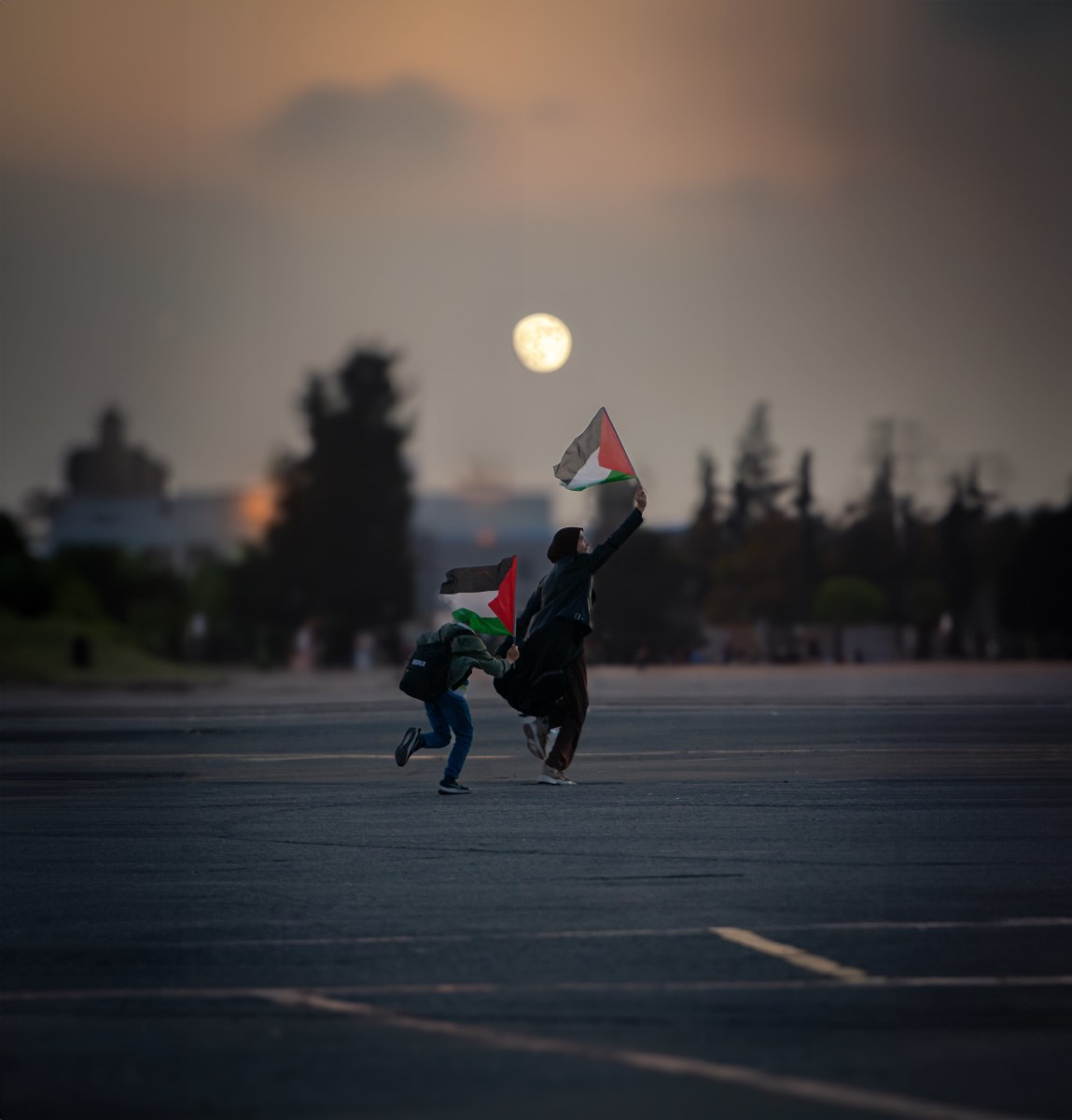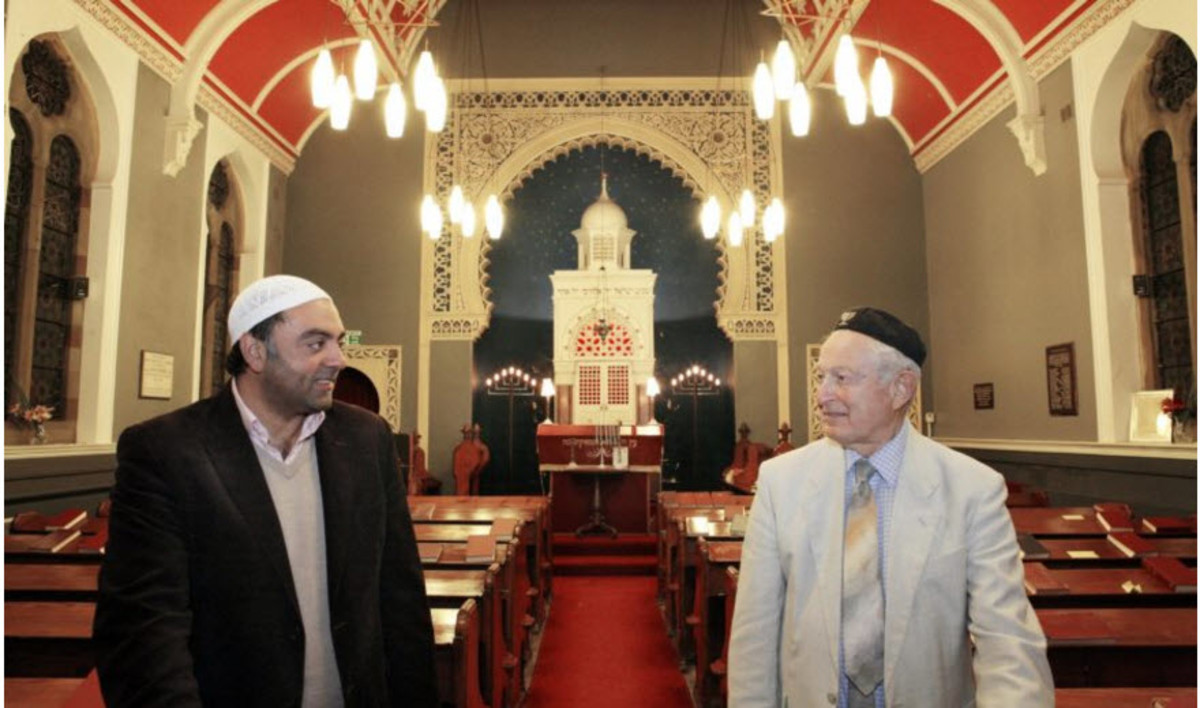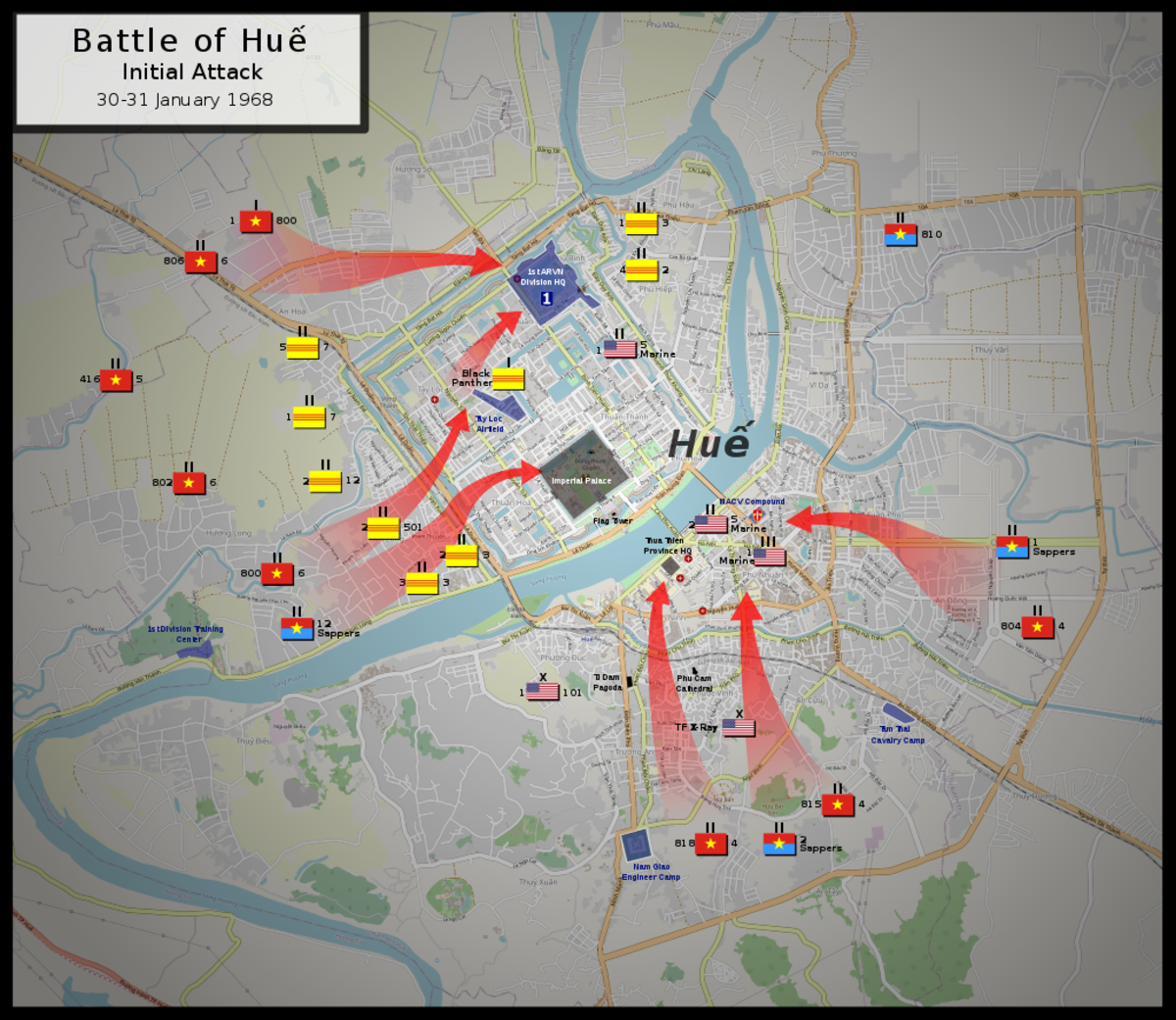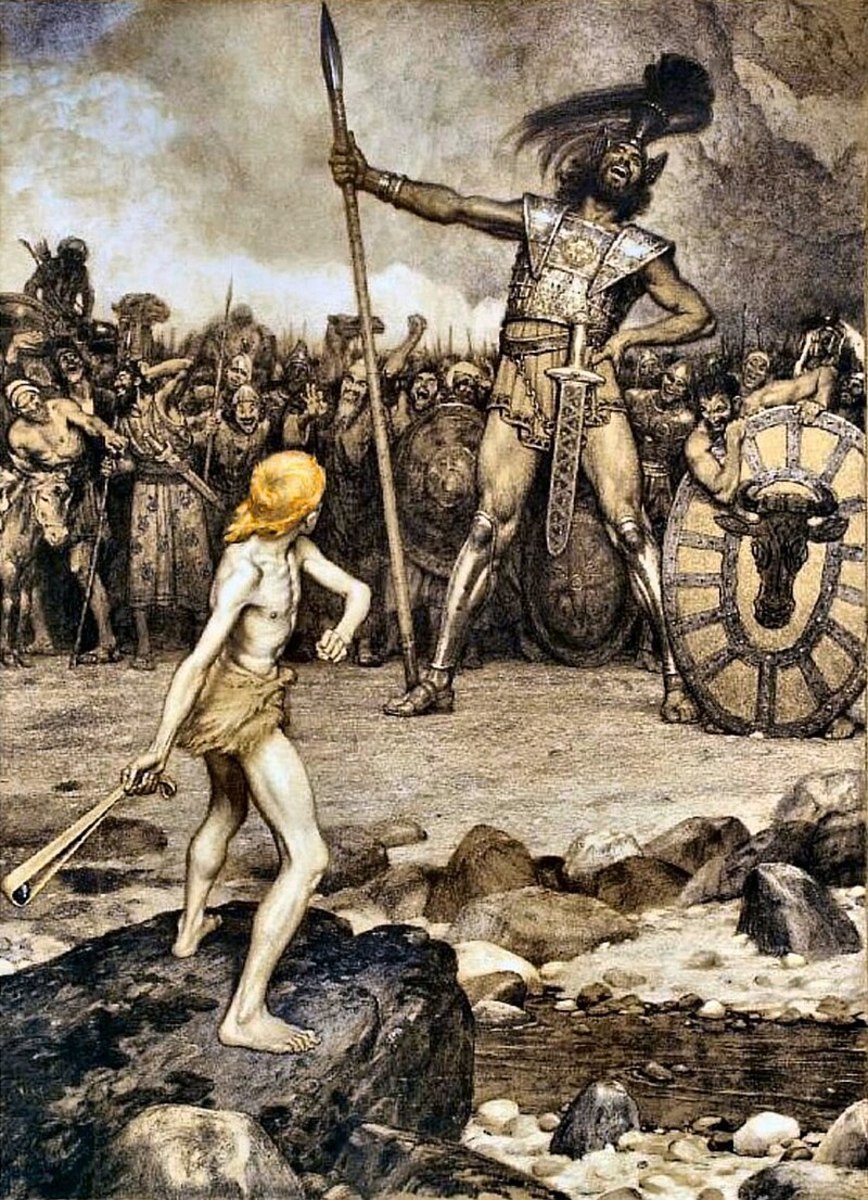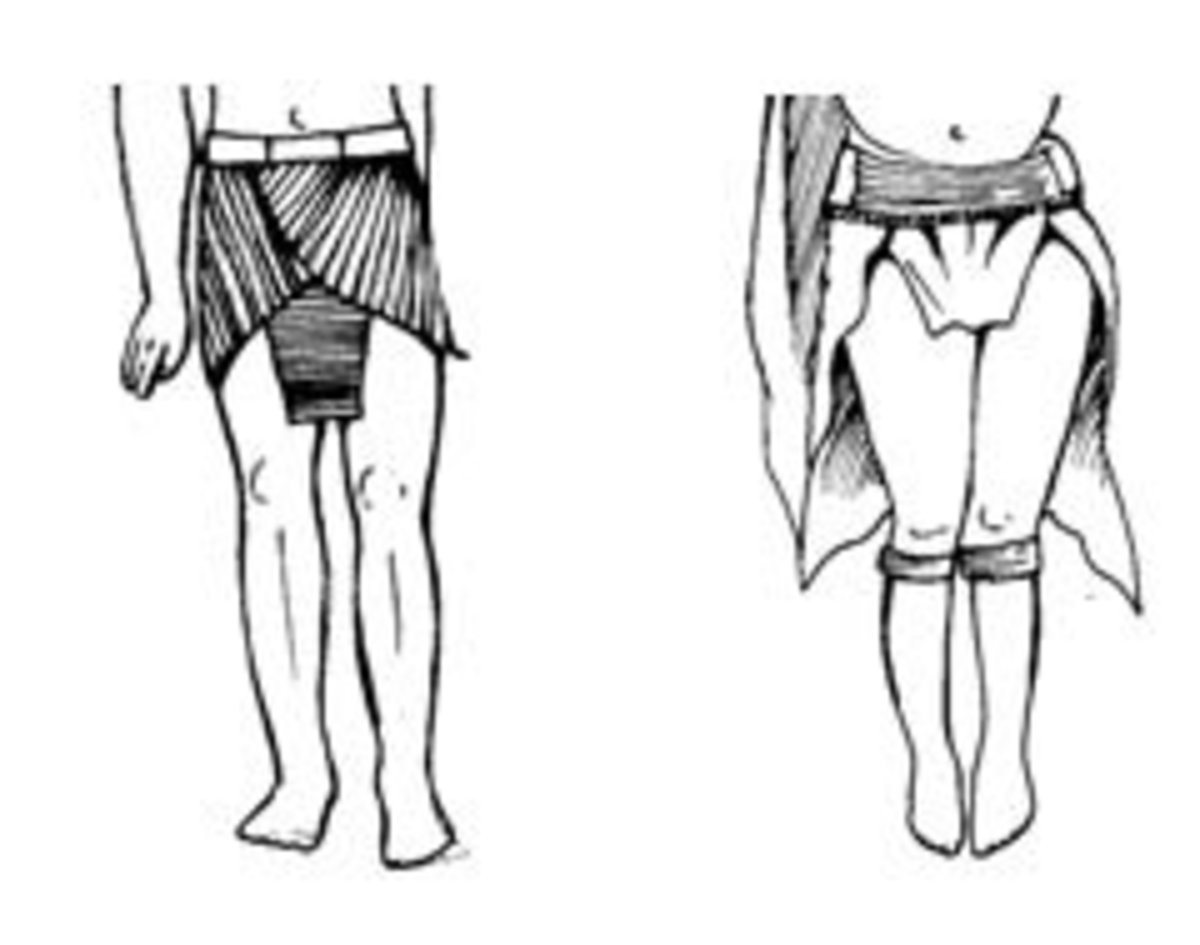'Truth" is only true from a certain perspective
As I turned on the television this morning (April 5th, 2004), I was just in time for a ‘Live News Event’ on CNN, with President George W. Bush speaking in North Carolina. His speech was supposed to be about job creation or jobs in general but I only caught the part where he was talking about 9/11 and ‘the terrorists’.
“These killers don’t have any values,” the President was explaining. “They hate free societies … They hate freedom and the things we love.” And in the end he assured us that “we will do what is right”. I was stunned. How can I keep seeing these lame explanations day after day, and even worse, how can some people believe it?
First of all, the fact that these terrorists killed themselves for a ‘cause’ shows that they have quite strong values (I am not implying that their values are “good”). Second of all, the Palestinians (terrorists) in the ‘occupied’ territories’ and the ones living in refugee camps in Lebanon and Syria want exactly what Mr. Bush said they did not want: freedom. The fact that nobody at CNN questioned those erroneous comments of the President, such as Al-Queda “no longer has safe-haven in Afghanistan” (although they do indeed have support in terms of followers and fighters), shows how the media is there to “serve the interests of the state” (Chomski, 1989) and not to give plain and unbiased facts to the general public.
Thus this paper will look at how media distorts the truth. The focus will mainly be on American media outlets (newspapers, television and radio) but not entirely. The distortion or partial portrayal of the truth is not only a characteristic of the media in the United States and by no means do I want to suggest that. Due to slogans such as “CNN: The most trusted name in news” I came to question what ‘truth’ is, in news. Once we see what ‘truth’ constitutes I will dare to show that ‘truth’ to be false or partial.
To try to see the ‘truth’ as presented by the media in news I decided to examine the portrayal of three controversial news issues: the Vietnam War, the Palestinian-Israeli conflict and 9/11. I picked these three news items because they received a considerable amount of coverage and since they are in different time frames they will help prove the point that news have always been portrayed in a biased manner and that ‘partial-truth-telling’ is not something new.
The Vietnam War was the first war to be televised; the first time when soldiers were accompanied by reporters and the first time people could really believe that what the television set was telling them was true. In 1967 in a survey in America “64 percent of the nation wide sample said that television’s coverage made them more supportive of the American effort” (Herman, 199) in Vietnam. So the media was trusted to be telling the truth and as a result of that the general public at that time was in favor of the war. Let us examine then, what media was telling people about the war in Vietnam.
To begin with, the media generally presented the conflict in ideological terms. Therefore, in the press or on television the U.S. “was leading the ‘free world’s fight to contain aggressive Communism”’ (Herman, 191). It was easier to vilify people in this way, by categorizing them as a ‘tentacle’ of international Communism. It is interesting to observe that this only happened when America became involved in Vietnam. Prior to that, when the french were fighting the Ho Chi Minh, the latter were defined by the media as ‘rebels’, ‘nationalists’ and ‘the Vietnamese resistance’. Yet, as soon as the Americans arrived in Vietnam, the Ho Chi Minh were referred to as the ‘communists’ or simply ‘the enemy’.
The media never saw the paradox in the fact that they reported that the Vietcong were the ones ‘infiltrating’ (their own country) and the U.S. was the one ‘resisting’ the aggression (Herman, 191). How the Americans were ‘victims’ of the North Vietnamese in Vietnam was also never asked.
As became the norm for American media, the American soldiers were always the ‘good guys’, the ‘heroes’, ‘the brave men’ who were engaged in the ‘battle of democracy’ and ‘in the struggle to defend democracy against aggression’ (Herman, 205). In other words, they were the righteous doing the good – sort of like what President Bush was talking about today. In contrast to this the North Vietnamese were shown as ‘the forces of anarchy’; the ‘savage’ ‘terrorists’, ‘brutal’, ‘fanatical’, ‘murderous’, ‘suicidal’, and ‘half-crazed’ (Herman, 205). A clear example of this was in October 1970 when a North Vietnamese artillery shell hit an orphanage in A Hoa. ABC’s George Watson was clear in stating that: “No one was prepared for the massacre, the irrational murder that the North Vietnamese inflicted on A Hoa” (Herman, 205).
The same cannot be said when on August 5th, 1965 Marley Safer reported on CBS that U.S. troops were “burning huts in the village of Cam Ne with cigarette lighters” (Herman, 201). The story received little publicity and the Pentagon quickly dismissed it claiming that the reporter was ‘unpatriotic’.
In general the public was shown through the media a clean and successful war (at least until the Tet Offensive). Whenever there was talk of civilian casualties those were regarded either as ‘collateral damage’ (which I believe is the title of a book) or simply as the ‘price’ for freedom. Sidney Hook explained in his article in the New Leader, on October 24th, 1966 that civilian casualties were: “the unfortunate accidental loss of life incurred by the efforts of American military forces to help the South Vietnamese repel the incursion of North Vietnamese civilians.
The anti-war movement also received little coverage except a few images of hippies with flower power signs. Looking back it is true indeed that protests against the war were not taken seriously by the media. “Demonstrators were often lumped together as lazy, pot-smoking, self-centered, coodled brats who knew nothing of the real world” (Liebovich, 60).
The justifications and conclusions portrayed through the media at the end of the war are just as partial as the coverage of the entire war when the views of the Vietcong were hardly ever made public. Homer Bigart concluded in an article in January, 1977 that “the war was less a moral crime that the thunderously stupid military blunder of throwing half a million troops into an unwinnable war” (Herman, 238). And the conscience of the general public was wiped clean when President Carter announced that America owes no debt to Vietnam because ‘the destruction was mutual” (Chomski, 1989). I was encouraged to find that the Wall Street Journal mentioned something about “$180 million in chemical companies” compensation to Agent Orange victims” (Herman, 242) but the truth was again only partial. The compensation applied only to American veterans and not to Vietnamese casualties.
What was believed to be the truth within the general public’s opinion as to whom the Americans were really fighting in Vietnam can be seen from a poll in the United States which asked “Who do you think is behind the attacks by the Vietcong?” The majority, “53% blamed the Chinese Communists” (Herman, 193). It did not even occur to people in America that the majority of the Vietnamese people welcomed a communist regime, or that they supported the Ho Chi Minh.
Yet, the American public cannot be directly blamed to be ignorant because there are many facts and issues which the media did not cover. As Noam Chomski wrote, “very rarely did the U.S. reporters make any effort to see the war from the point of view of the ‘enemy’” (Herman, 177). The idea that the United States ‘defended’ South Vietnam as the U.S.S.R. ‘defended’ Afghanistan, was never raised.
Supporter and adviser of the Diem government, Joseph Buttinger stated that “’massive expeditions’ in 1956 that destroyed villages … ‘were kept secret from the American people’” (Manufacturing, 188). And British photo-journalist Philip J. Griffiths wrote in ‘Le Monde’ that in the process of retaking the city of Hue, civilians “were killed by the most hysterical use of American firepower ever seen” (Herman, 225). In the Japanese press, Katsuichi Honda wrote that gunboats and helicopters were “firing away at random at farmhouses,” “using the farmers for targets as if in a hunting mood” (Herman, 195). But such ‘unpatriotic’ reporting was never present in the American media and the CBS would have never acknowledged at the time that it “helped shield the audiences from the true horror of war” (Herman, 200).
In order to keep-up the myth of the ‘righteous American soldier’ and the ‘righteousness of the war’ such details could not be presented by the media. The fact that India tried to send one hundred buffalo to Vietnam but the U.S. “threatened to cut the ‘food-for-peace’ aid (Herman, 247) also never made the news. Neither did the fact that the Carter administration denied rice to Laos or that Oxfam was prohibited in sending one hundred solar pumps for irrigation to Cambodia in 1983 (Herman, 247). The media in the United States did not comment about the twenty-five million acres of farmland or the twelve million acres of forest destroyed. It also did not mention that all six major industrial cities in North Vietnam were heavily damaged. To mention such things would seriously underscore the ‘truth’ that America fights ‘good wars good’ and so the media presented if not untruths about the Vietnam war, then partial-truths.
The second controversial news topic to be discussed is the Israeli-Palestinian conflict, which dates back to the end of WWII. In this sense, it would be impossible in this paper to give a full account of what was told from the beginning until now. Thus, I will go through the coverage by the media of a couple of particular incidents. In what follows I would like to show how Palestinians are portrayed and what becomes evident of Israel through the media.
At the beginning of the latest intifada, in early December, 2000 Times magazine stated that:
>
“Eight weeks ago, the Palestinian began the latest protests with
old-style demonstrations. Then, they started shooting at Israeli
towns. Now they are attacking the settlements. It’s not at all clear
what the next step will be, but every step seems to get bloodier.”
- The Bias Implicit, 13
>
So just like the Viet Cong during the Vietnam War, the Palestinians were also shown to be irrational, violent and murderous. This reminds me of protests in Romania when I used to wear shirts which read “Hooligan” because that was how the media described us as protesters. All Palestinians in this case should wear shirts which can read “Valueless Terrorists” since that is how the media and President Bush view them at this time.
To return to the coverage of news stories of the Palestinian-Israeli conflict, I would like to focus on two news stories: the ‘Muhammad al Durra’ controversy and the news coverage of the Israeli soldier being thrown out of a window of a Ramallah police station. Both these stories had wide coverage world-wide through the media, and took place not too long from each other at the beginning of the ongoing intifada.
The case of Muhammad al Durra, the twelve year old boy who was shot in the Gaza Strip, “ ‘caught in the cross-fire’ between Israeli soldiers and Palestinian gunmen” (Salt, 1) quickly got the attention of the media. The pictures filmed by Talal Abu Tahma of the boy killed in his father’s arms were indeed shocking. The camera man himself said that: “The bullets could not have been fired by Palestinians. I clearly saw it with my own eyes that the bullets were coming from the side where the Israelis were standing. I saw it and so did my sound man and a number of citizens” (Salt,1).
With this in mind I would like to quote from the Sydney Morning Herald on this news story (7th October, 2000) because not only is this newspaper the oldest in Sydney but also because it is regarded as one of the most trustworthy. The explanation to the ‘Muhhamad al Durra’ controversy was that it was:
>
“all too typical of Palestinian provocations and of the so-called
Intifada in which crazy mobs of indoctrinated refugee camp dwellers kept in the camps deliberately not by Israelis but by
Other Arabs, were thrown up against the Israeli army for the
Sake of evoking world hostility to Israel” (Caught in, 2).
>
Again the Palestinians were portrayed as irrational, fanatical and crazy. The news story presented the young Palestinian boy as used as a ‘human shield’ and the general question was why this boy was at that Netzarim intersection in the Gaza Strip to begin with.
The second news story, of the two Israeli soldiers detained by the Palestinian police in Ramallah, was handled differently. The news images of an Israeli soldier tossed through the second-story window of a Ramallah police station were played over and over on all news channels just as much as those of the twelve year old Palestinian boy shot to death in the Gaza Strip. Yet, the question of what the two Israeli soldiers were doing in Ramallah is more peculiar. The Palestinian boy was not ‘caught in the cross-fire’ in Israel, but the Israeli soldiers were caught in what is considered Palestinian land.
The explanations to what the two Israeli soldiers were doing in Ramallah, differed. Some rumors claimed that they were “Jewish settlers kidnapped from the nearby settlement of Pisgot” and others said that they were “Israeli reservists who had lost their way’” (Salt, 2). In the Time magazine, on the 23rd of October, Lisa Beyer went along with the second explanation claiming that indeed the two Israeli reservists took a ‘wrong turn’. In this story the victims are by no means irrational, they simply made a mistake which cost them their lives, of course once again at the hands of ‘half-crazed’ Palestinians. The media forgot to ask what happened to all the check-points entering Ramallah, or how the soldiers were able to go ahead through their own check points into Palestinian land, getting lost.
Since it is somewhat clear now that Palestinians are generally ‘brain-washed’ and crazy, as shown in the previous cases, let us look at how the image of Israel is reflected in the media. In New York Times in 2000, Michael Gordon wrote an article titled: “Greater Threats from Lesser Powers: the Middle East’s Awful Arms Race.” His first sentence stated that: “With the Soviet military threat receding, the spread of chemical, biological and nuclear weapons to the third world is fast emerging as the greatest danger to the stability of the world” (Chomski, 1993). His focus was on the Middle East, so his examples are mostly from that region but their number is substantial. Some of the dangers mentioned in the article were “missile launchers in Iraq that place Israel under threat”; the “Libyan capacity to refuel its bombers in flight” and the fact that “Saudi Arabian medium range missiles” (Chomski, 1993) were being developed. Only in the 17th paragraph it is mentioned that “Israel is believed to have a small but potent arsenal of nuclear weapons” (Chomski, 1993). Therefore, we as news recipients are to believe that Libya’s capability of refueling its bombers in flight or Saddam Hussein’s missile launchers are in general more dangerous to the security of the Middle East than Israel’s nuclear capacity. That is how ‘the truth’ is presented in one of America’s most prominent newspapers.
The Israeli-Palestinian conflict is perhaps the most controversial of the three issues discussed; the coverage of it in the news is thus, also the most biased. The National Public Radio was examined by FAIR in its coverage of the Israeli-Palestinian conflict for six months during 2001. The results speak volumes: 62 out of 77 Israeli deaths were reported, while 51 out of 148 Palestinian deaths were reported. From this, the study concluded that there was a 81% chance that Israeli deaths would be reported in comparison to 34% of Palestinian deaths to be reported (Aamidor, 3).
The words are also carefully arranged by the media in this case. ‘Occupied territory’ is mentioned as ‘disputed territory’ or ‘administered territory’ (Aamidor, 3). This is necessary because in an ‘administered territory’, Israelis can respond to violence through ‘retaliation’ but if they were portrayed as an ‘occupying’ force than ‘retaliation’ does not hold its grounds (one is no longer on the defensive). It all has to tie in with the general portrayal of what the ‘truth’ is. If newscasts kept mentioning the conflict as a thirty-five year old occupation and a war of liberation, then the “rock-throwing” (Aamidor, 4) by Palestinians can be viewed as more than just fanatical violence.
To see how ‘truth’ is distorted and told partially, one has to look at what the mass-media outlets fail to say. On the question of settlements, they are indeed illegal “under the Fourth Geneva Convention” (Dunsky, 11) and they are in conflict with U.N. resolution 242 and 338 which call for Israel’s “withdrawal from occupied territories” (Prestowitz, 198). But again such disturbing news hardly ever reach popular news outlets in the United States. The fact that Peace Now reported how “Israeli Prime Minister Ehud Barak had earmarked $300 million for settlements in 2001” but this never created any questions for the media is something to think about. The growing number of settlers from 1993 to 2001 by around 60,000 (Dunsky, 14) also was of no importance. It is actually amazing how the media in the United States never made the link between the fact that the U.S. has given an estimated $85 billion in aid to Israel since 1967 and the fact that Israel is able to expand their settlements, which are “basically colonies on Arab land” (Dunsky, 8). There is also no connection in the media between U.S. financed and produced weapons and the ‘state assassinations’ by Israel of Palestinians (the latest was that of Sheik Ahmed Yassin).
“The times regularly refused to report Arafat’s offers” for peace and “even letters referring to them were banned” (Chomski, 1993). In this way what we seem to perceive as truth is obviously partial. At the same time Areil Sharon (Israel’s Prime Minister) responsibility for “the vicious massacre at Qibja in 1953” or ‘his regime of indiscriminate terror’ in Gaza in 1971” (Chomski, 1993) are also disregarded and kept out of the public’s view. On August 22nd, 1988 a father of a Palestinian kid, who was suspected of throwing rocks, was beaten to death by Israeli soldiers “of an elite unit of the Givanti Brigade. This case was first reported in Ha’aretz a month later” (Chomski, 1998). But Such incidents though are insignificant for any of the major media outlets in the United States and was thus kept away form the public.
The most intriguing facts are those resolutions from the United nations which America vetoed in Israel’s favor. In early 1988 resolutions condemning Israel’s attack on Lebanon were vetoed by the U.S. (Chomski, 1993). IN 1989 a resolution against Israel’s violation of Palestinian human rights was again vetoed by the United States (Chomski, 1993). In June 1990, the “U.S. vetoed a resolution (voted 14-1) calling for a fact finding mission to investigate abuses against the Palestinians in the occupied territories” (Chomski, 1993). And prior to Iraq’s invasion of Kuwait, “the U.S. vetoed another resolution which condemned Israel’s practices” (Chomski, 1993). None of these vetoes made ‘the news’ in the United States and so one may only stop to think of the words of the director of U.N. Human Rights Commission, David Zonsheine who stated that: “You stand at a checkpoint, and you know that Israeli settlers go right through and Arabs don’t, and you remember South Africa” (Prestowitz, 206).
The last incident and also the most vivid in everyone’s minds is the attack on the Twin Towers on September 11th, 2001. “Freedom has been attacked by a faceless coward. Freedom will be defended” (Eisman, 57), quoted NBC’s Tom Brokaw from an earlier speech of George W. Bush. Why do so many people in Arab countries hate America, asked Larry King on his show on October 18th. Don Rather from CBS, answered that: “They hate us because they’re losers. They see us as winners.” So it is simple: America is the winner (the winner of what we are not told) and everyone else hates that.
With such
explanations and banners running on most U.S. channels such as ‘Attack on
America’, ‘America under Attack’ or ‘America’s New War’, the country was ready
to invade even their fifty-third state (or Canuckistan as some Americans called Canada when it
refused to join the war in Iraq). It was never questioned by the media how
George W. Bush declared war on terrorists. To be at war means usually that
there is a conflict between states or nations and that there is a sense of
‘competition’ between the opposing forces. Thus, since terrorists do not
represent a state and can not be seen as ‘competitors’ to the United States,
going to war with them was not discussed.
Two polls taken in 2003 show what the public in the United States knows in regard to 9/11. First in January, 2003, in a Knight Ridder poll, fifty percent of those whom answered claimed that one or more of the 9/11 hijackers was of Iraqi origin. The second poll I would like to look at is a poll in the same year done by CBS and the New York Times. The result of this poll claimed that 53% of those whom answered believed that Saddam Hussein was ‘personally involved’ in what happened on September 11th (Robertson, 1). Kathleen H. Jamieson, director of the Annenberg Public Policy Center at the University of Pennsylvania explained this situation best when she stated that:
>
“The Bush rhetoric and the rhetoric of the administration strongly
implied that there was an association between Iraq and 9/11 , so that
the public thinks there is, when it’s been told there is, isn’t surprising”
(Robertson, 5).
>
The media does indeed influence how the truth of news is presented, or how much of it is presented to the public. To show how in general an event such as 9/11 can be differently portrayed through the media, I will like to shortly compare the coverage of this event in the American Time magazine with that in the German magazine Der Spiegel. The comparison is made on the basis of these two magazines' equal popularity and readership in their own countries.
Time magazine’s special coverage of 9/11 from September 14th, 2001 incorporated many pictures, opinions of the public, stories about fire-fighters and survivors. The tone of the magazine suddenly changed on the last page when a strong bias is presented by Lance Morrow in his article “The Case for Rage and Retribution”.
Morrow is a regular contributor to Time magazine for over thirty years therefore, it can be presumed that readers take him quite seriously. That is precisely why his comments are disturbing. Morrow began by claiming that:
>
“For once, let’s not have ‘grief counselors’ … to make everyone
feel better as quickly as possible … Healing is inappropriate now,
and dangerous … A day cannot live in infamy without the nourishment
of rage. Let’s have rage” (Time Magazine, 14th September, 2001)
>
And if the fact that Norrow has been writing for the Time Magazine for so long does not clearly show the magazine’s biased view, then looking at September 24th issue, of the same year, can underline that bias. The overall content suggested that the reasons why Bin Laden and his followers ‘hate America’ are because America’s support for freedom and democracy world-wide. Such a plain answer and one lacking of evidence would be unbearable for one who does not realize that the public is used to such statements and ‘half-crazed’ explanation. It has been fed such ‘pills’ since the Vietnam war constantly.
For the European audience, which is much more involved in international affairs Der Spiegel could not produce the same content as the Time Magazine did. The truth could not be shown as plain as it was shown for the American audience. In its September 15th issue, Der Spiegel included a range of perspectives, from sympathy for the victims, to first hand accounts of what happened by Germans living in the United States, to criticism of the /Bush administration. There were also in-depth articles about Osama bin Laden and his terrorist organization (Eisman, 59).
Der Spiegel was not so quick to claim that ‘terrorism’ is aimed at America’s freedom or democratic views. The comments and articles in this magazine argued that:
>
>
“Terrorism is the weapon of the weak, and that a lot of
people hate America … with motive as the U.S. extends
its power to all corners of the earth and forces the U.S.
economy on all people without concern for the damage
it does” (Eisman, 63).
>
>
Also the same article mentioned the fact that the United States has “troops in sixty five other lands” (Eisman, 63), a reason why some might regard the U.S. as an imperial power.
Such issues can not be raised in any American media outlet. That is clear. A prime example why Der Spiegel would not last two issues in the U.S. is Bill Maher and his ‘Politically Incorrect” TV show. On September, 17th, 2001 Bill Maher made a comment which cost him his air-time. He criticized George W. Bush’s comments about the terrorists being cowards by saying: “We have been the … [ones] lobbying cruise missiles from 2000 miles away. That’s cowardly. Staying in the airplane when it hits the building, say what you want about it, it’s not cowardly” (Eisman, 65). Almost instantaneously FedEx and Sears canceled their advertisement during the show and about ten or so television channels canceled the airing of his show.
Considering such consequences it is easier to understand why the ‘truth’ is never questioned by the media in the United States and why it always agrees with the ‘truth’ that it is told to portray. One could never write in such circumstances that Argentinian students walked out of class when a teacher criticized Osama bin Laden (Tariq, 329), or that “Greek crowds at football matches who refused to mourn for the two minutes the government had imposed … broke the silence with anti-American chants” (Tariq, 329). Americans can not even begin to comprehend why “Beijing students interviewed by the New Yorker spoke openly of their delight” (Tariq, 337) because they were never told the truth. They are never presented the entire truth about international affairs or even the affairs of their own government.
It is interesting and at the same time sad to see what Senator William Fulbright said at the Senate hearings on government and the media in 1966. He observed that “… many of our prominent newspapers have become the agents or adjuncts of the government policy” (Chomski, 1989). And this can be said about most media outlets not only in the United States but in other countries also. The point though, is that since America claims to fight for democracy and freedom, it should allow its reporters and newscasts to reveal the truth about news in general, to keep the public aware and involved instead of engulfing it in ‘half-crazed’ truths.
>
>
>
>
>
>
>
>
>
>
>
>
BIBLIOGRAPHY
>
>
>
>
>
- Aamidor, Abe. A Story of Conflict: coverage of fighting in the Middle East has brought war to many newsrooms. The Quill, Feb. 2003, v91, il, p12(4)
- Chomski, Noam. Necessary Illusions: thought control in democratic societies. Publishers Group Canada: Toronto, 1989.
- Chomski, Noam. Letters from Lexington: Reflections on Propaganda. Between the Lines: Toronto, 1993
- Dunski, Marda. Missing: The Bias implicit in the absent. Arab Studies Quorterly. Summer 2001, v23, i3, pl.
- Eisman, April. The Media of inamputation: patriotism and propaganda – mainstream news in the United States in the recent weeks following September 11. Critical Quorterly, vol. 45, nos. 1-2.
- Herman S. Edward, Chomski, Noam. Manufacturing Consent. Pantheon Books: New York, 1988.
- Kopkind, Andrew. The Thirty Years Wars. Verso, London:2002
- Liebovich, W. Louis. The press and the Modern Presidency. Praeger Publishers, Westpart: 1998/
- Robertson, Lori. Baghdad urban legends: how come so many people think weapons of mass destruction have been found in Iraq, or that Saddam Hussein was personally involved in the September 11 attacks? Are the news media to blame? American Journalism Review. Oct-Nov, 2003, v25, i7, p26(6).
- Salt, Jeremy. Caught in the cross-fire? Arena Magazine, Dec. 2000, p5.
- Tariq, Ali. The Clash of Fundamentalism, Verso. London: 2002
>

